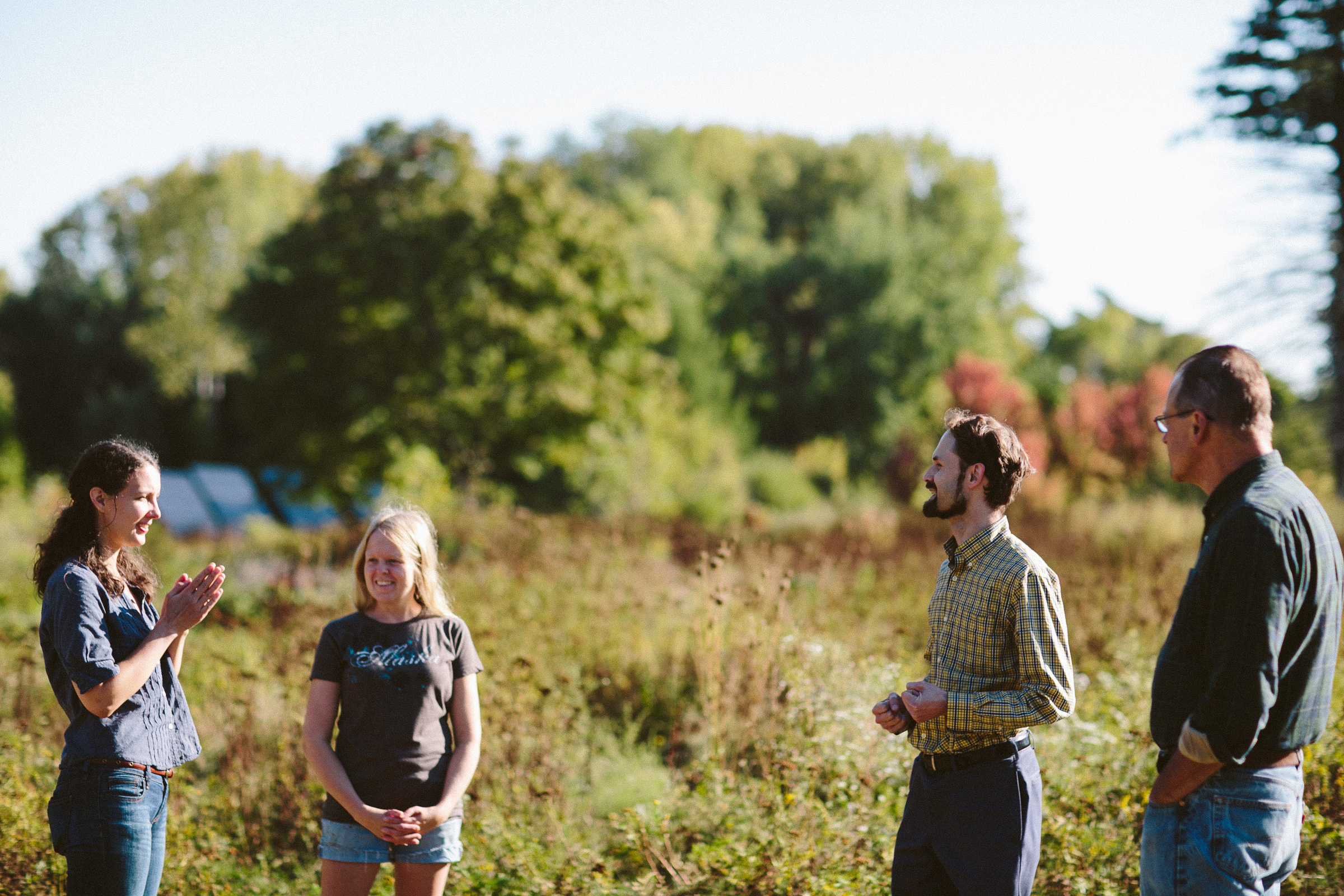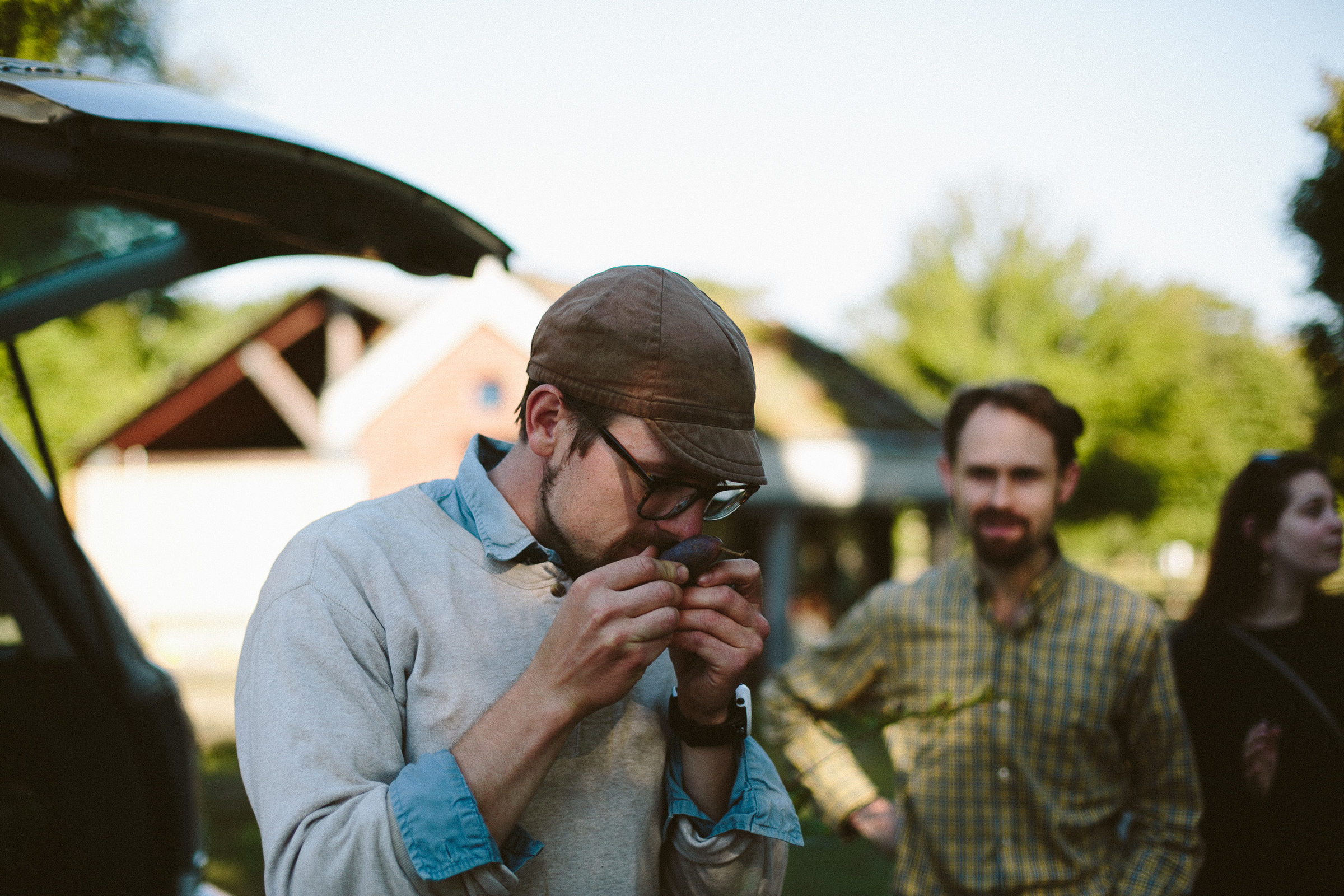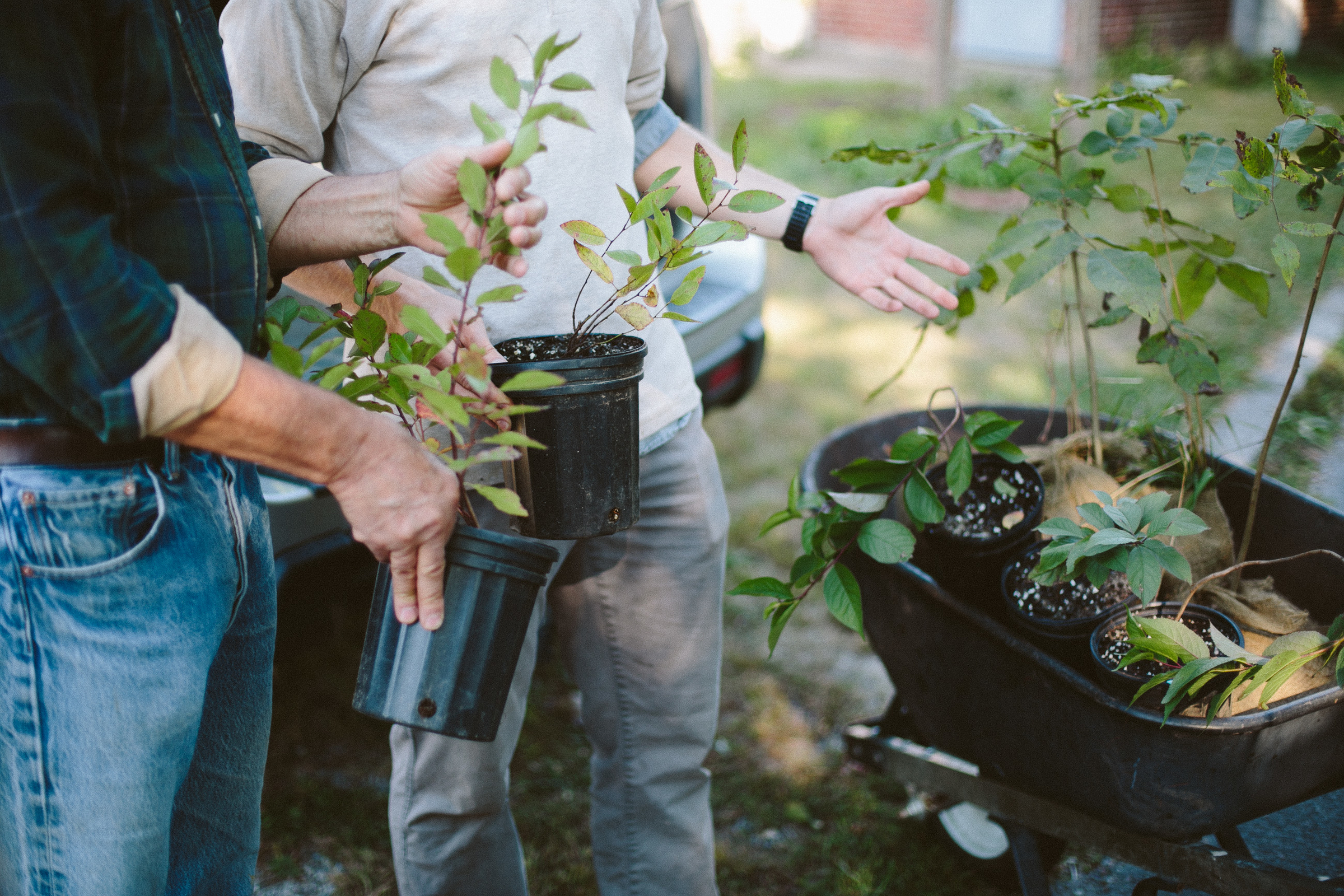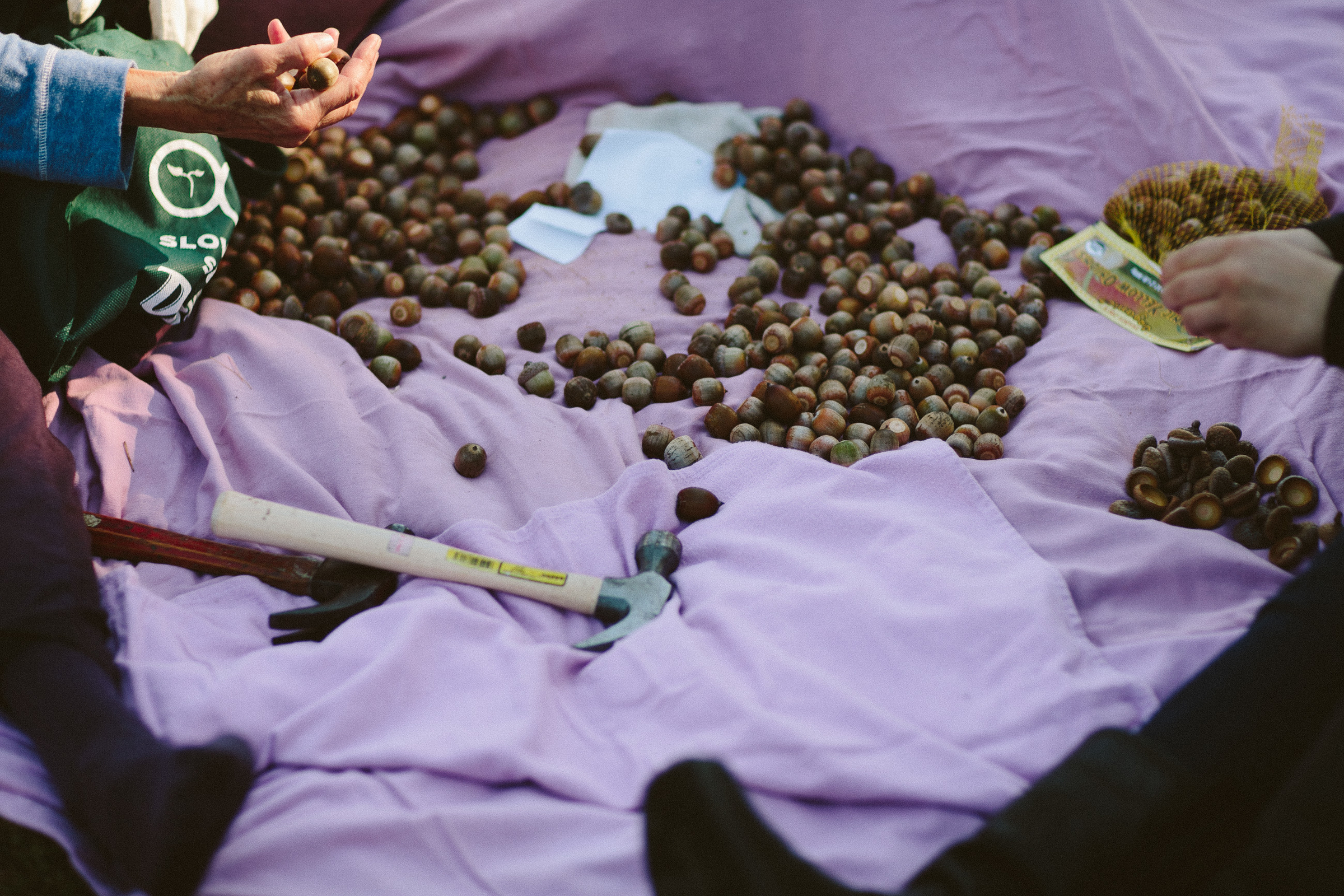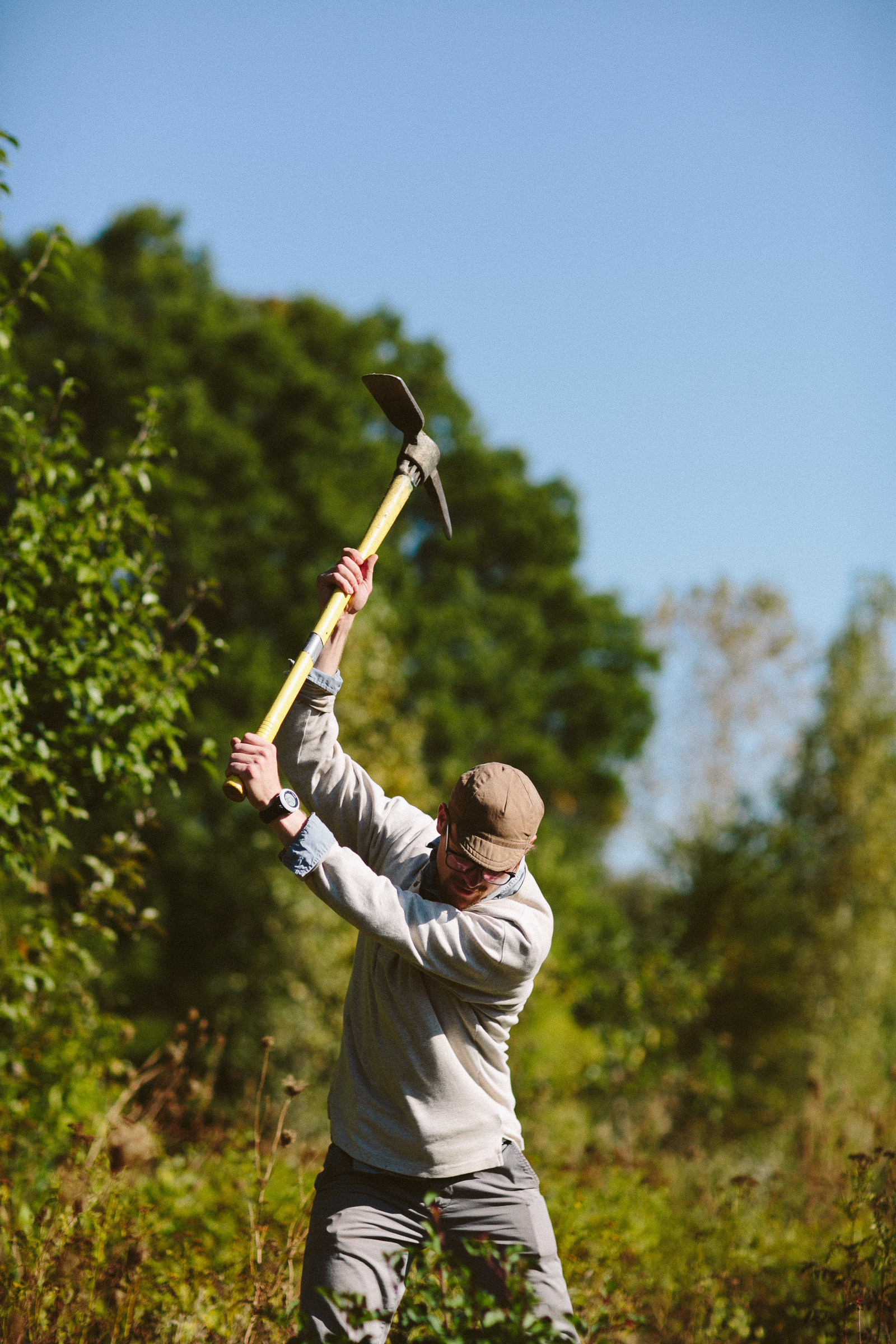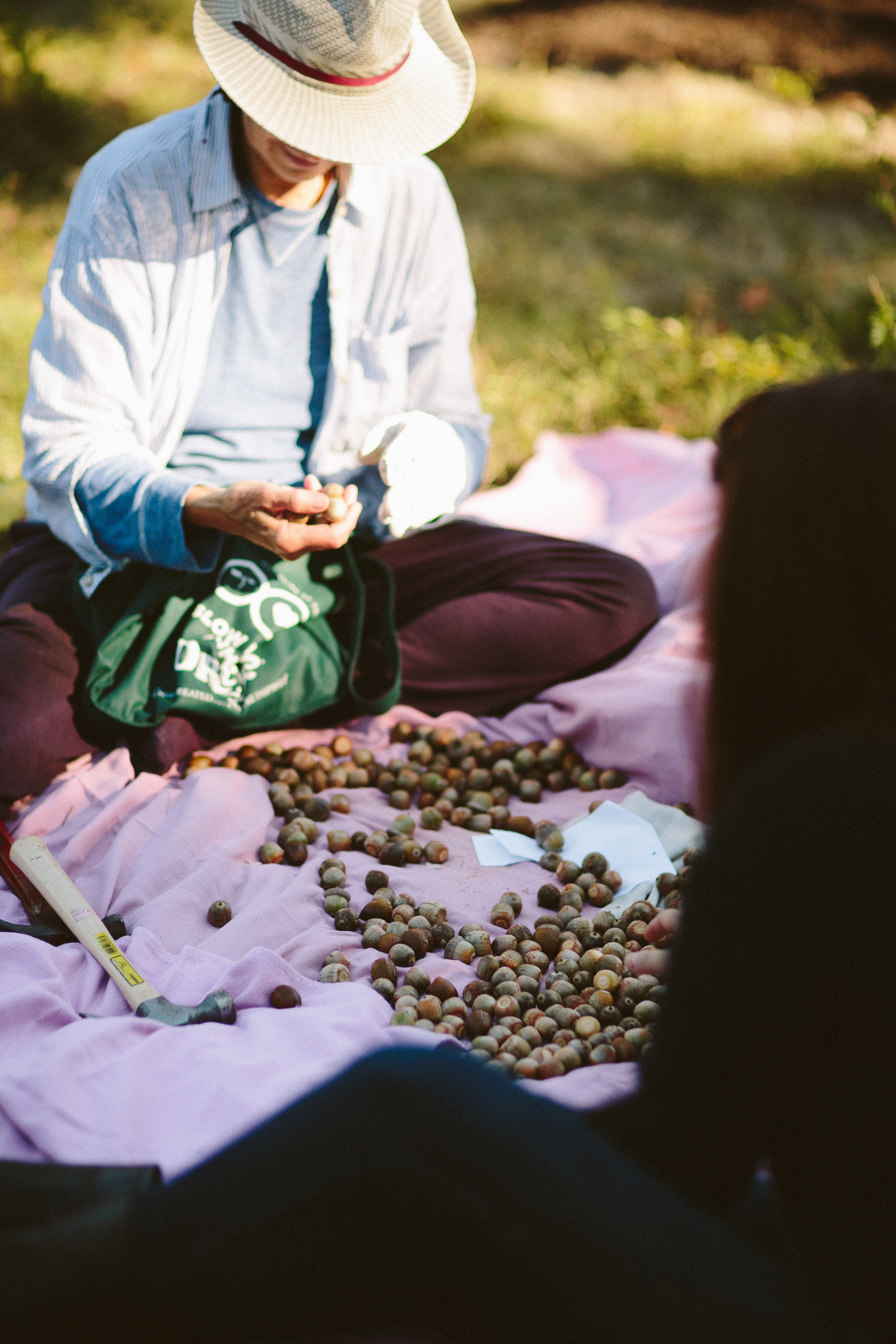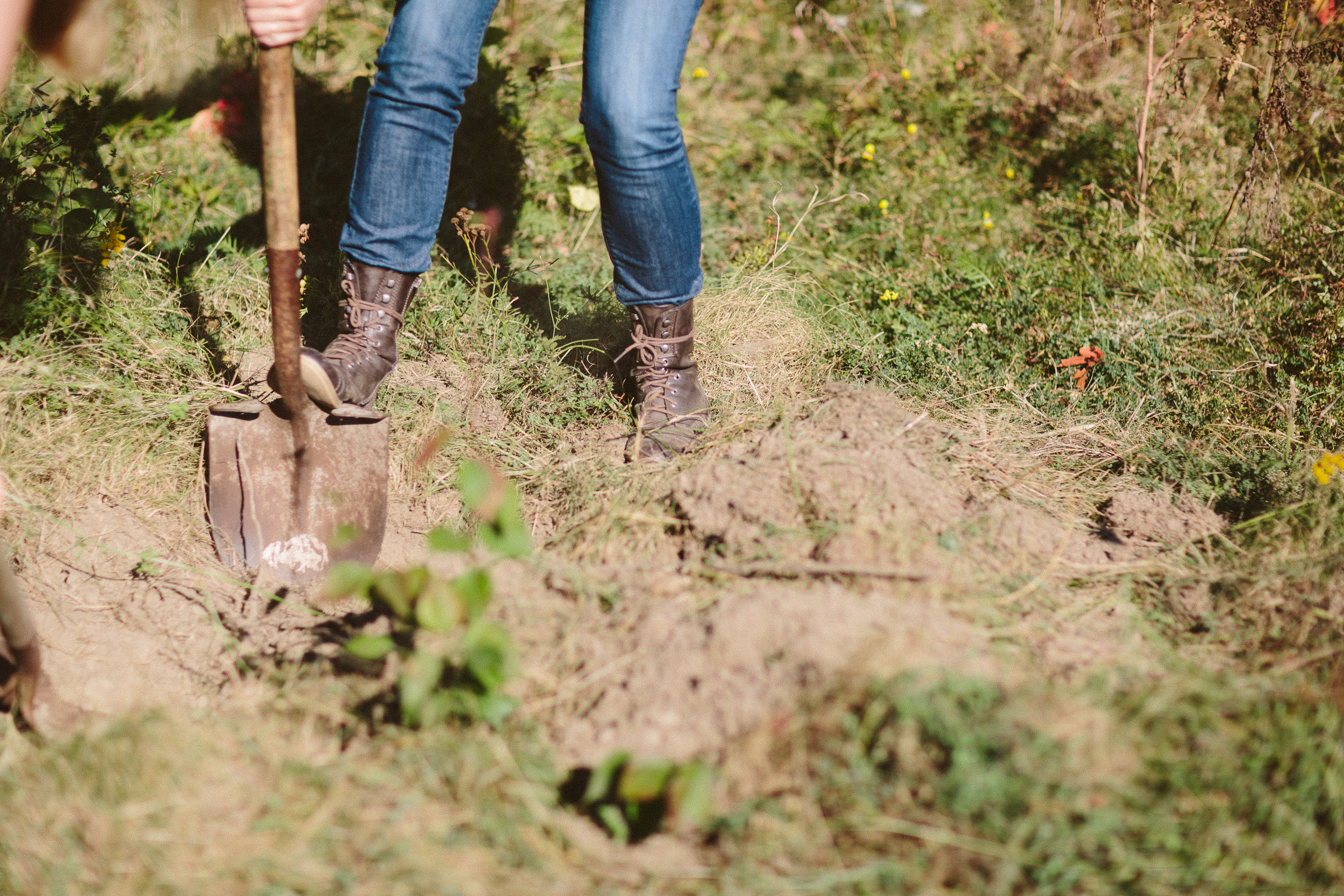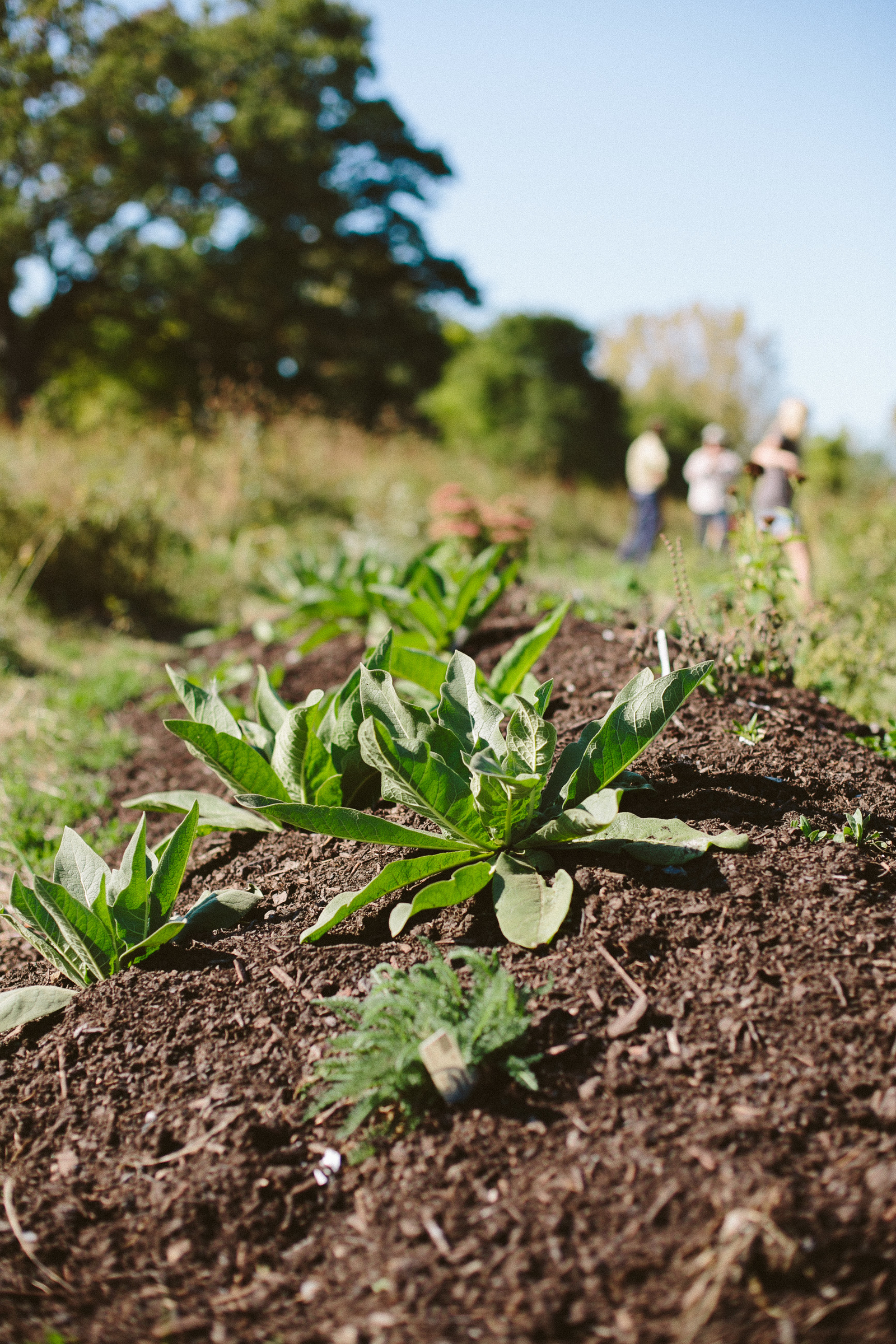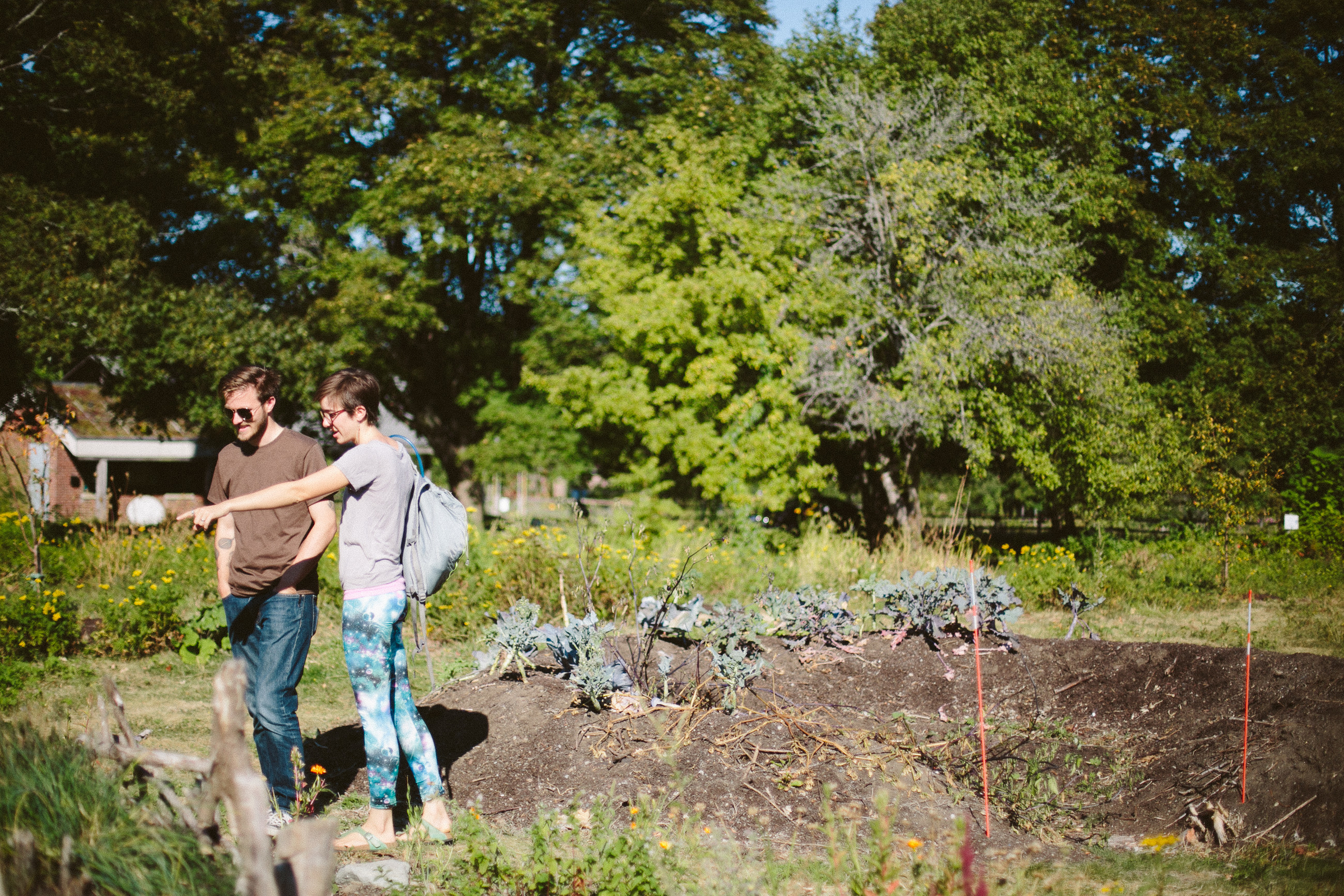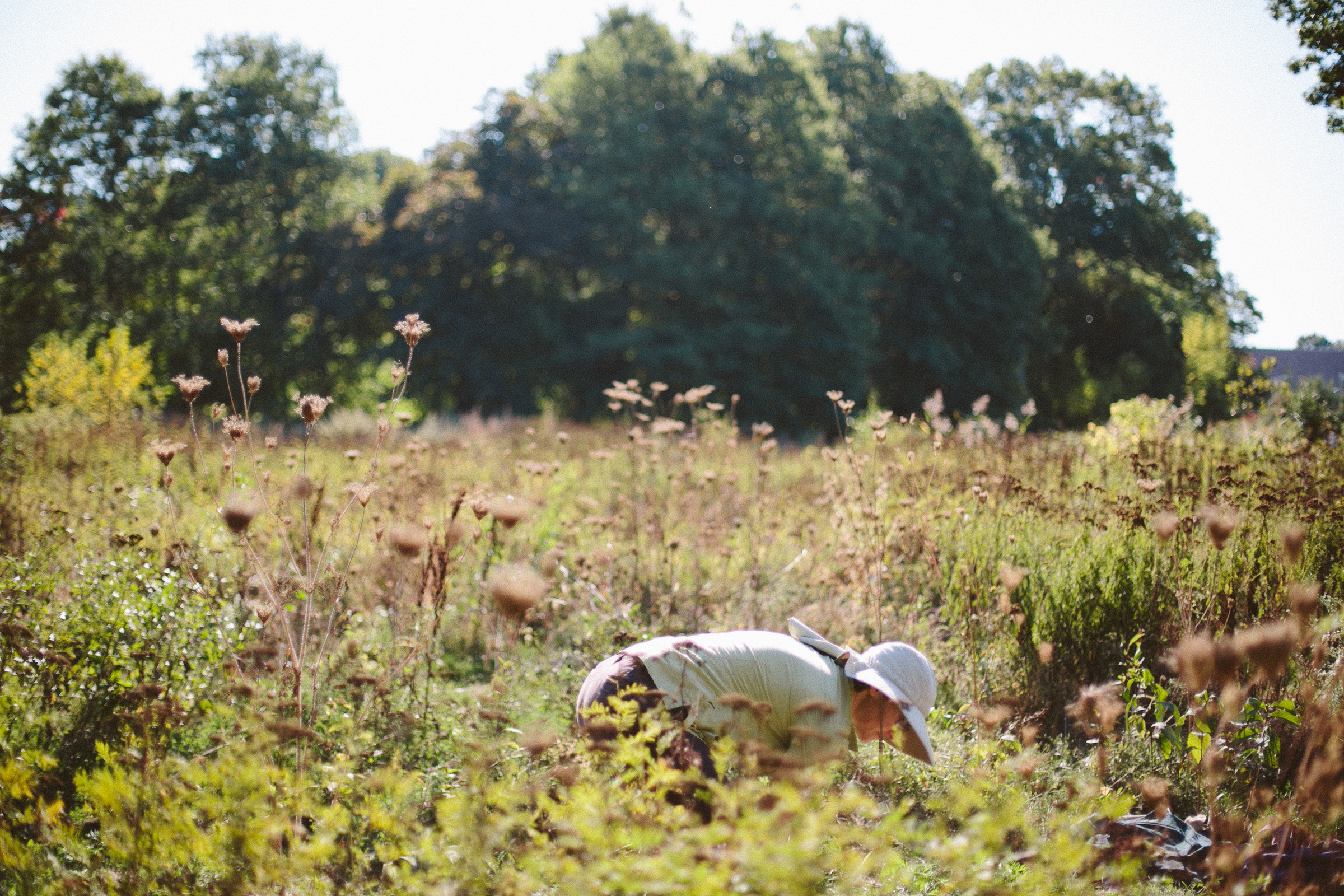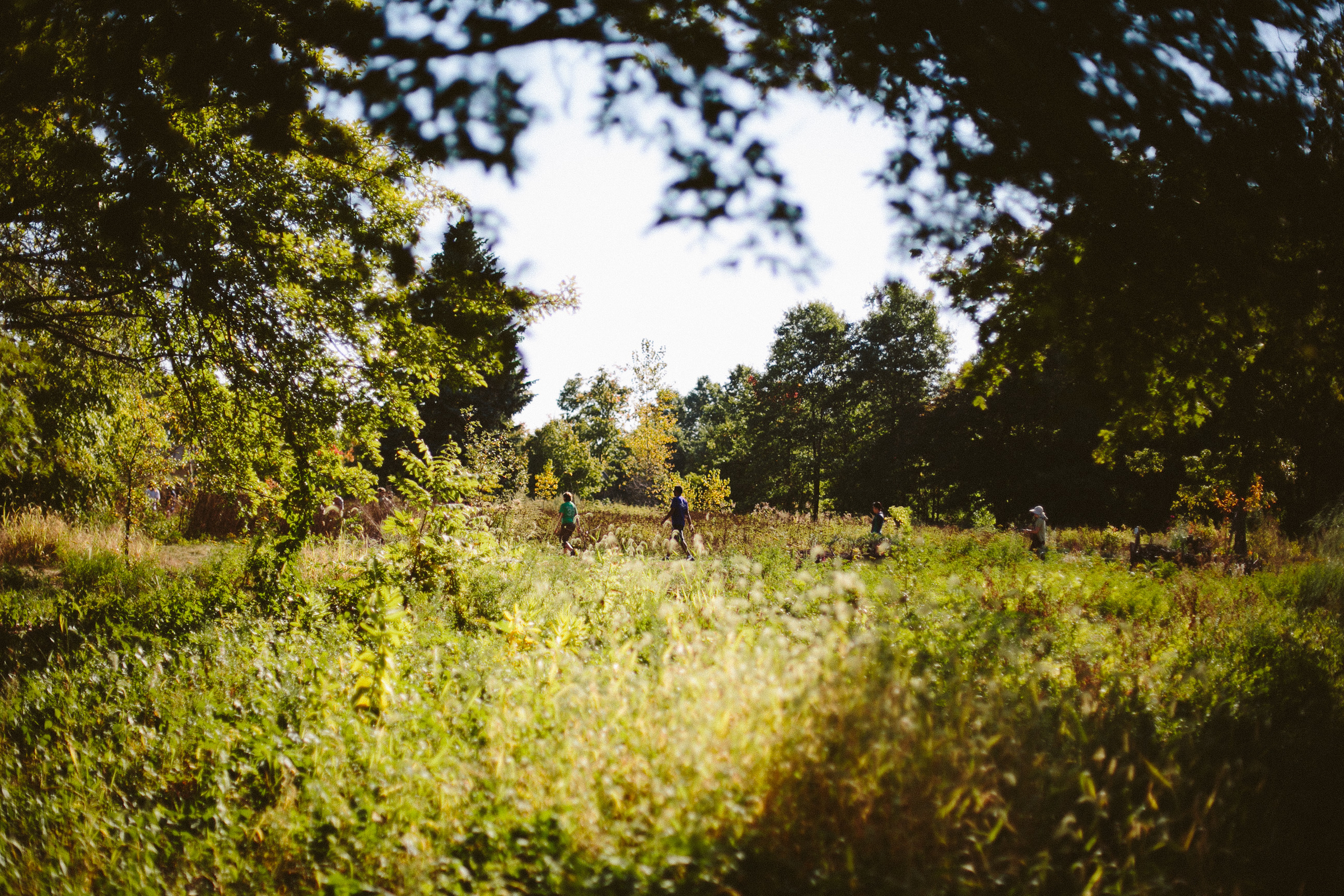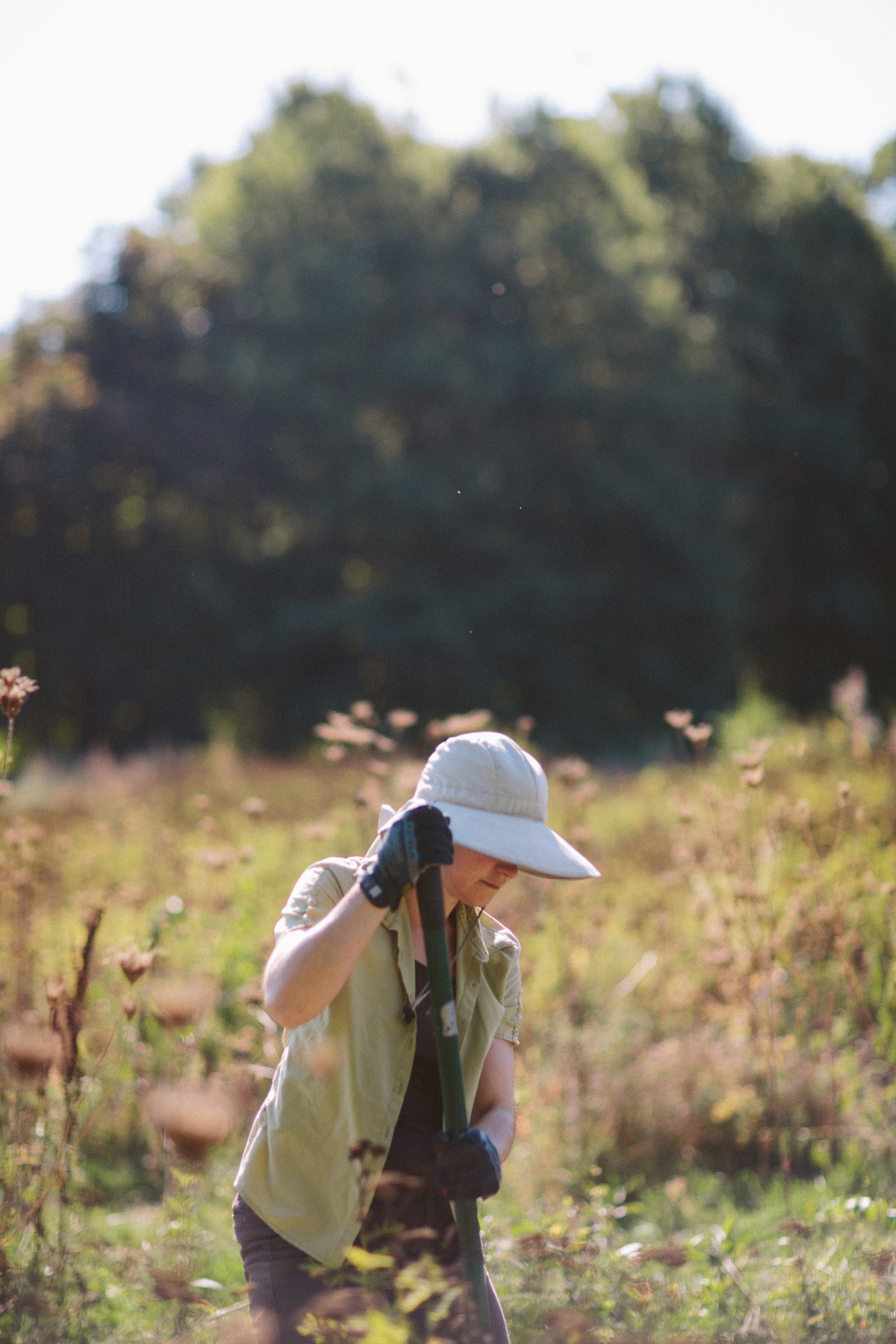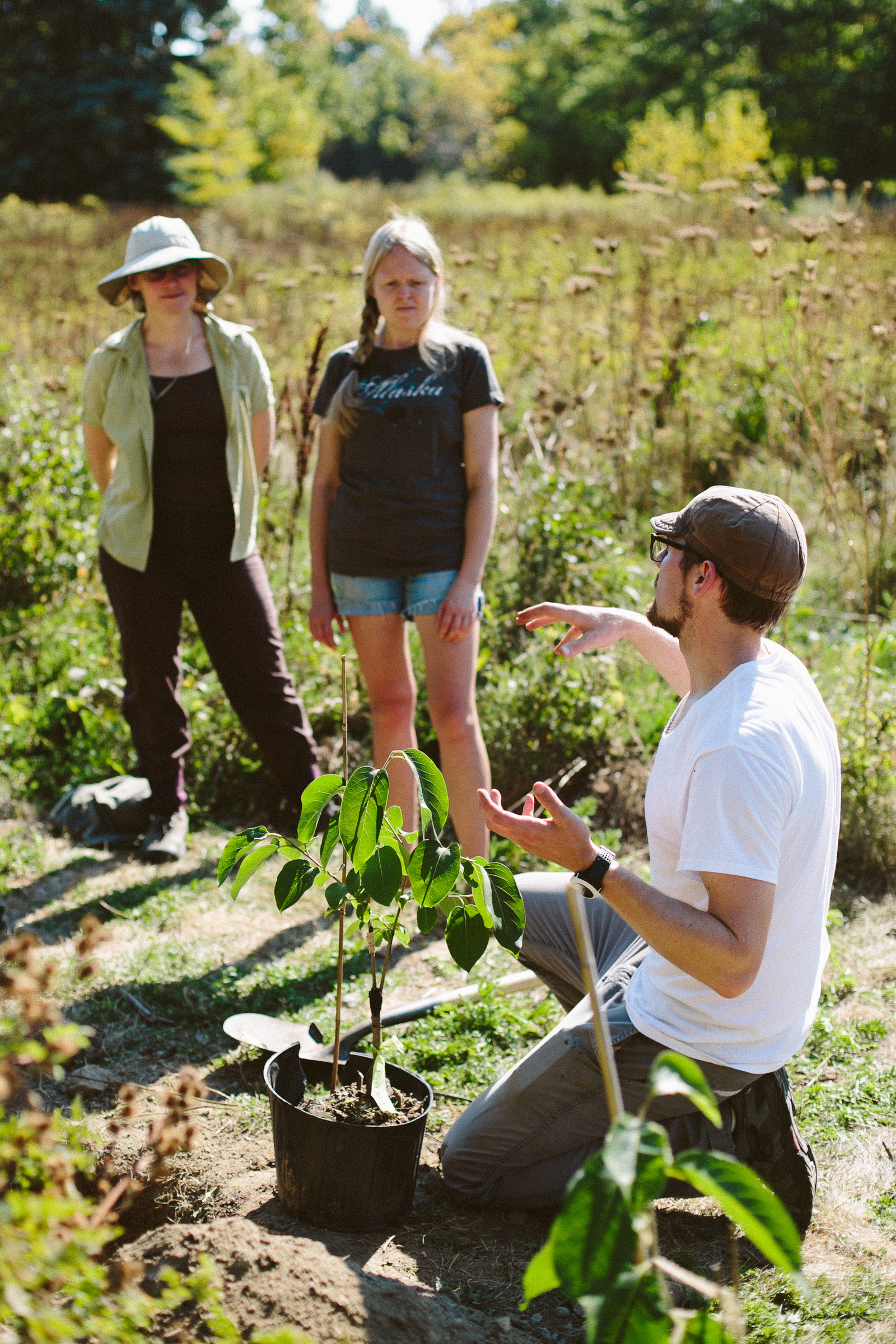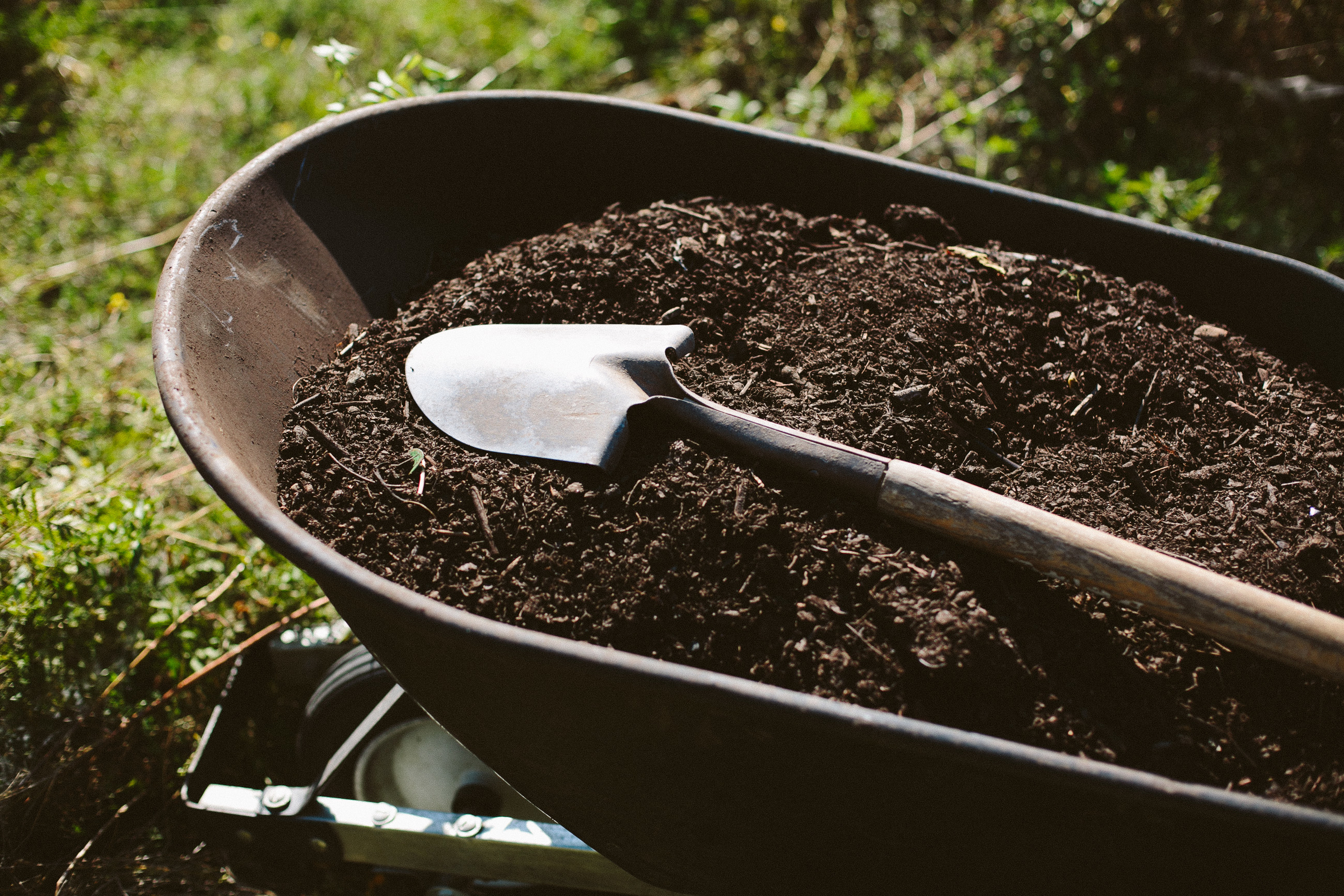tell northeast:
uncovering regional stories worth sharing.
An Urban Food Forest: The Gift of Harvest
Story and Photographs by Cara Brostrom
There is a forest of food and it's growing in this city.
This forest is made up of love, sweat, and time – as well as cucumbers, kale and butternut squash. It is a landscape of edibles, carefully planted and designed to follow the patterns of nature. Layers of edible vegetation support one another – an upper layer of fruit and nut trees, a mid-layer of vines and berry bushes, and a ground cover of herbs, edible perennials and annuals. But it is also a landscape of people. Gardeners, designers, urban planners, writers, educators, beekeepers, and many more lovers of land and food have come together on a given piece of land in the middle of the city with a common goal. They come here to get their hands dirty, to dig holes, to sheet mulch and plant crops. Many also come to share valuable knowledge. Together, they bring a food forest to the City of Boston.
According to the Boston Food Forest Coalition (BFFC), “a food forest is a sustainable land management system that mimics a woodland ecosystem, focusing on food-producing trees and shrubs.” It offers something that parts of inner city Boston desperately need – an ecologically healthy, and useful way to meet our most urgent human needs for food, shelter, water harvesting, and medicine.
The goal of the BFFC’s flagship project is to establish a public food forest network throughout the City of Boston with the help of both dedicated stewards and nearly 150 volunteers who will build, weed, share, and eat together. Through a partnership with the Boston Nature Center in Mattapan, the BFFC was given access to a piece of land to take their ideas from seed to sprout. With thoughtful planning according to the principles of permaculture, and a design process based on patterns found in nature, this food forest has produced an astounding harvest with minimal maintenance.
On a recent, cool October morning, I met with a small group of volunteers and organizers. The main task of the day was to plant several trees along a path which traveled between a beautiful herb spiral and a flourishing hugelkultur, or raised bed. The volunteers unloaded a pallet of donated trees from the back of a car, and wheeled them over to the planting site. The day progressed with an education in tree planting- how to dig a hole with pick-axe and shovel, prepare the hole for planting, and finally how to plant the tree. And as the sun rose in the sky and labors increased, sweaters and hoodies were quickly shed.
In just a few hours time, a community had been built, all centered around the joint goal of bringing fresh, accessible food to the city. Steering committee member Dane Smith believes that building this type of community will ensure that the food forest reaches its full potential. This is our first year and we had a wonderful harvest,” said Dan Schenk, site manager and another cofounder of the BFFC. “We picked kale, pumpkins, cucumbers, potatoes, squash and shallots. It’s also very cool to know that we are planting fruit trees that could be producing food even a hundred years from now.”
There is a lot of potential in a food forest; it is a network of education, food and community. The vision of the BFFC includes publicly accessible gardens, orchards, and food forests spread across the city and planned and maintained by the members of the communities who host these edible spaces. edible spaces. In a city where a wait list for a ten-by-ten foot plot in a community garden can take three years at best, the interest is there but the space is not. In these community-run food forests, the BFFC would work with neighbors to make sure each one is sustainable. Together they decide what foods they will grow, how they will maintain it and how they will share it. Executive Committee member Allison Meierding says the goal here is to create a space where people can get excited about learning to grow their own food.
And the flagship site at the Boston Nature Center has had a very exciting year. Over 180 pounds of food were harvested throughout the year, and another untraceable amount was plucked by wildlife in between coalition visits. Among the harvest were cucumbers, cantaloupes, watermelon, tomatillos, kale, pumpkins, butternut and kuri squash, cabbage, potatoes, onions and shallots. The onsite herb spiral boasted rosemary, thyme, mint, oregano, dill, parsley, lemon balm, nasturtium, Johnny jump ups, borage and echinacea. All of this produce was then distributed. Cucumbers were sold by donation, day campers made kale chips, pumpkins were given to elementary school children, volunteers went home with shallots and tomatillos and squashes were made into potluck suppers.
The demonstration site of the Boston Food Forest is about education combined with growing food. They hope to one day host harvest events focused on what is in season, to operate entrepreneurial programs where youth turn nuts into butters and berries into jams, and to share a portion of this locally grown food with local food pantries. In the meantime, the nature of the work is to continue education, and to share the food.
Most importantly the Boston Food Forest has been placed in the hands of those who live here; they have been given the opportunity to learn, grow, give and receive. The BFFC is working to connect all of these into a network of perennial food, a forest in the city that is made up of community and homegrown abundance.
◊◊◊
Learn more about The Boston Food Forest at bostonfoodforest.org

